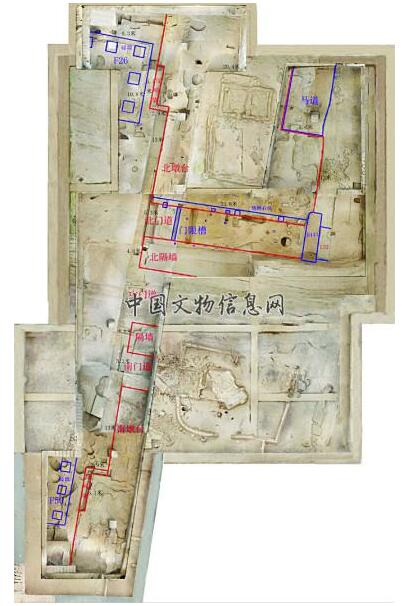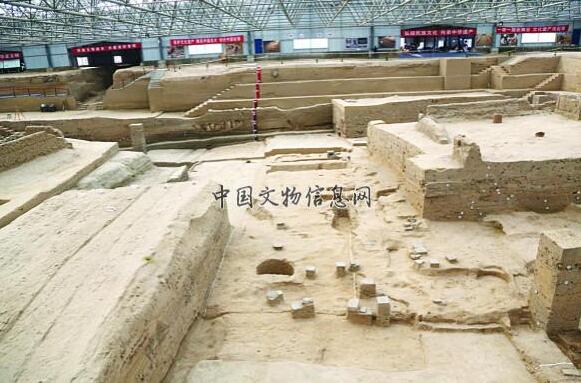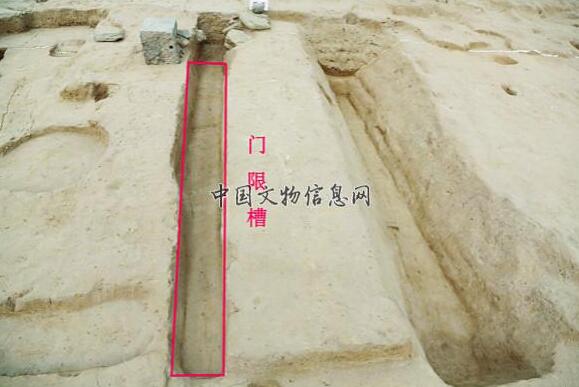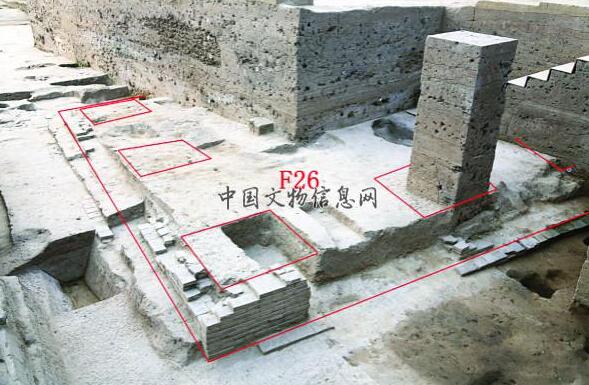Important archaeological achievements found from the Shuntian Gate remains of Dongjing ancient City in Northern Song Dynasty
Shuntian Gate remains was discovered in 1982. In 1983, archaeological excavation had been conducted, however hasn’t been finished because of raised water level. Since 2012, archaeological excavation has been carried out by a joint team consisting of Henan Provincial Institute of Cultural Relics and Archaeology and Kaifeng Municipal Institute of Cultural Relics and Archaeology. After 6 years’ work, dynamic development of city gate and layout of gateway are figured out. According to excavation results of key parts, structure of main city gate of Shuntian Gate (Xin zheng Gate) from Song Dynasty is found out. Besides, formation processes have been got sorted through cross-section of site layers.

The aerial photo of main excavation area of Shuntian Gate
Shuntian Gate is situated in Jinming District, Kaifeng City, which was constructed as early as the second year of reign xiande of Emperor Shi Zong of Later Zhou Period during Five Dynasties (955AD). At that time, it was called “Yingqiu (welcoming autumn)” Gate, and later, the name was changed as “Shuntian” Gate. Because this gate straightly leaded west to Zhengzhou City and sat facing Zheng Gate of the inner city, it was also called “Xin zheng Gate” and the name lasted to Jin Dynasty. Until 1232 AD when Emperor Ai Zong from Jin Dynasty abandoned the city and fled to the south, the gate was deserted. Shuntian Gate is a small enclosure for defense outside city gate and rectangular in plane. It’s 160m long from south to north and 100m wide from east to west. City wall of the enclosure is about 18~20m wide and 1~4m high in residue, which is 5~9m below present ground surface.

The Main Doorway of the North Gate
Archaeological excavation reveals that the main city gate contained 1 gate and 3 doorways, 54.2m long from south to north and 23.8m wide from east to west. It consisted of abutments, partitions and gateways. South and north abutments are 13m wide from south to north. South and north partition walls are 4.8m wide. The middle Gateway is rather poor-preserved due to long-time use of past dynasties. Based on remained feature, it’s predicted that middle gateway might be 8m wide. South and north gateways are 5.3m wide. There is a gate slot feature being found in about 4m deep into west entrance of north gateway. Outer surface of main city was brick-packed. City wall in northern side of main city-gate is 20.4m wide. In north part of inner side of north abutment, there is a seemingly bridle trial foundation feature, 5.6m wide and about 26m long.
There is a housing building base on a high platform being cleared out near city walls in south and north sides of main city-gate within the barbican. These two architectures are south-north symmetrical with same form and layout. Square piers are found along east and north sides of platforms. In north part of northern building, architectural components such as kalavinka, sets of gray clay animal figurines, dragon pattern eave tiles are cleared from ash pits from corresponding period.

The Main Doorway of the North Gate
Gateway from Northern Song Period overlaid on base of “Yingqiu” Gate of Later Zhou Period. Complete rammed gateway base was first built on base of “Yingqiu” Gate with pure clay. And then on the rammed base, abutments and foundation ditch of partitions were dug. After that, tile fragments and clay were used as rammed materials one by the other to level the ditch so that it could be used as load-bearing base. “Yingqiu” Gate from Later Zhou Period was 36m wide from south to north. Outer surface was packed with bricks. There was a single gateway. South and north abutments were 14m wide and gateway was about 8m wide.
This season’s excavation of Shuntian Gate covers an area of 3500 square meters in total. 48 housing remains, 380 ash pits, a well, 5 kilns and so on from Song Dynasty to Qing Dynasty were cleared. 2900 pieces (or sets) specimen of all different kinds of artifacts and plenty of pottery and porcelain shards and etc. were unearthed.

Housing building base being cleared out near city walls in south and north sides
With largest excavation scale and most complete stratigraphic layers in archaeological history of Dongjing ancient city from Northern Song Dynasty, this season’s excavation is the first archaeological excavation of gateway site of Dongjing City, revealing scale, form and basic constructing methods of main city gate of Shuntian Gate. From Five Dynasties to Northern Song period, form of doorway remains changed from single gateway without an enclosure to triple gateways with an enclosure. This is the first discovery of square enclosure remains in archaeological excavations of China’s ancient capitals, filling the gap in archaeological history of China’s ancient capitals and providing unprecedented precious archaeological materials for research on layouts of Dongjing City, dynamic development of forms of ancient capitals’ city gates as well as developmental history of Kaifeng City and so on. (Translator: Ma Huanhuan)

